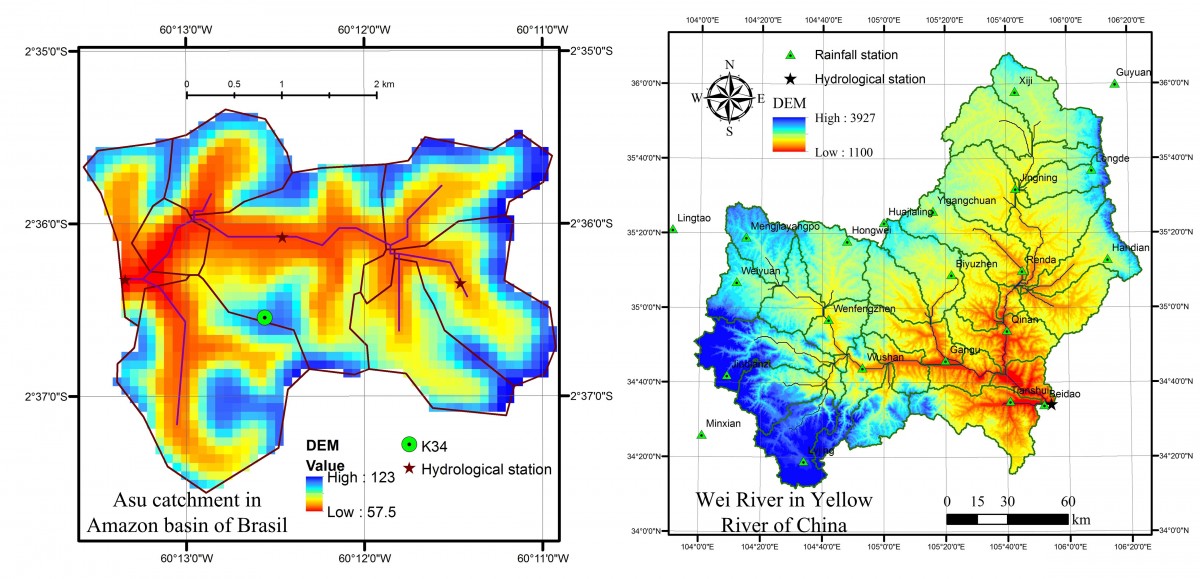Representing macropore flow at the catchment scale: a comparative modeling study
Macropore flow is an important hydrological process that generally enhances the soil infiltration capacity and velocity of subsurface water. Up till now, macropore flow is mostly simulated with high-resolution models. One possible drawback of this modeling approach is the difficulty to effectively represent the overall typology and connectivity of the macropore networks. We hypothesize that modeling macropore flow directly at the catchment scale may be complementary to the existing modeling strategy and offer some new insights. Tsinghua Representative Elementary Watershed model (THREW model) is a semi-distributed hydrology model, where the fundamental building blocks are representative elementary watersheds (REW) linked by the river channel network. In THREW, all the hydrological processes are described with constitutive relationships established directly at the REW level, i.e., catchment scale. In this study, the constitutive relationship of macropore flow drainage is established as part of THREW. The enhanced THREW model is then applied at two catchments with deep soils but distinct climates, the humid Asu catchment in the Amazon River basin, and the arid Wei catchment in the Yellow River basin. The Asu catchment has an area of 12.43km2 with mean annual precipitation of 2442mm. The larger Wei catchment has an area of 24800km2 but with mean annual precipitation of only 512mm. The rainfall-runoff processes are simulated at a hourly time step from 2002 to 2005 in the Asu catchment and from 2001 to 2012 in the Wei catchment. The role of macropore flow on the catchment hydrology will be analyzed comparatively over the Asu and Wei catchments against the observed streamflow, evapotranspiration and other auxiliary data.

